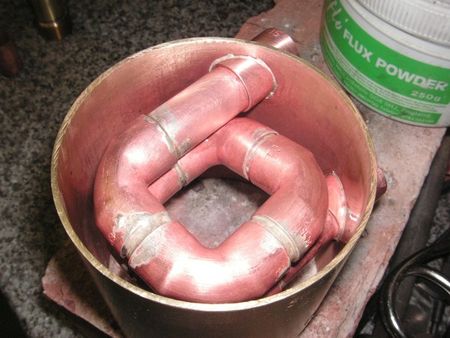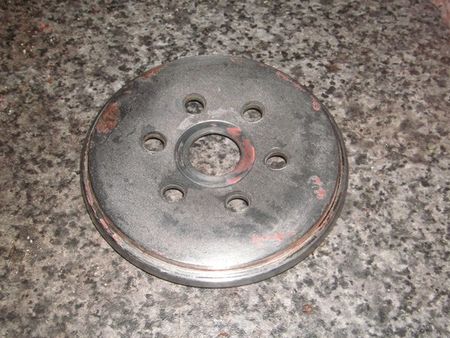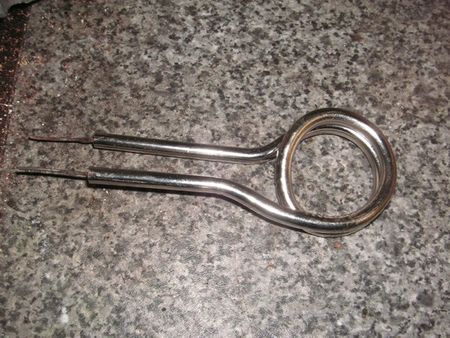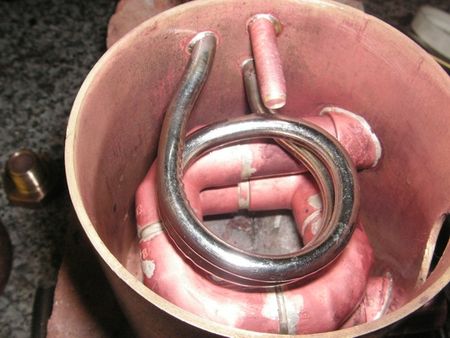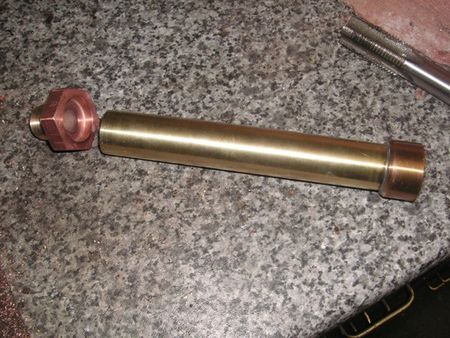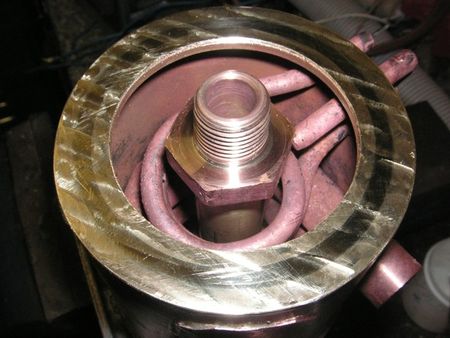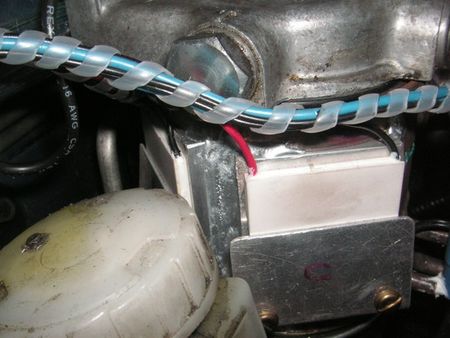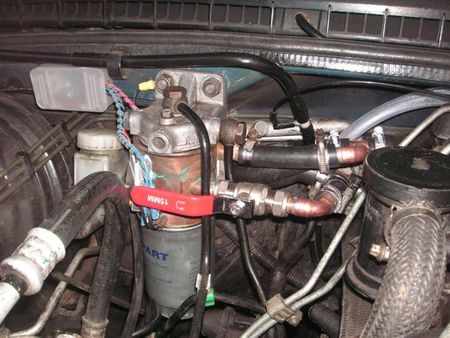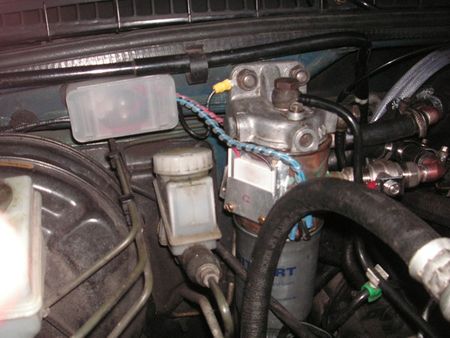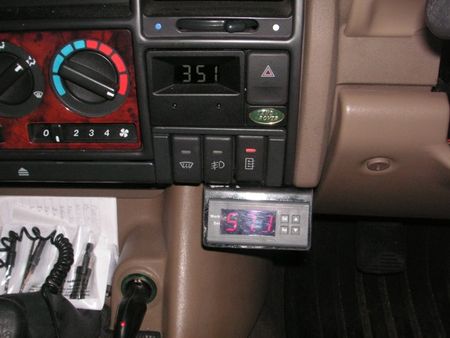Heated fuel filter
After several winters of draining and swabbing HMPEs or wax out of the fuel tank in sub-zero temperatures, the writer decided to make a heated filter to combat the problem.
The vehicle is a 1998 Land Rover Discovery, which takes for ever to reach working temperature if the engine isn’t under load. Unlike running on vegetable oil the car will start fine on cold bio, the problems come when precipitated wax/HMPEs are drawn from the tank and block the filter, so both electrical and water heating was used with the thinking that once the engine has started the filter needed to be warmed as quickly as possible and with ample electrical power available, an electric heater should fit the bill until normal running temperature was reached.
Hunting round for cheap 12v heaters yielded one of those mini immersion heaters which plug into the cigarette lighter and dunk in a cup of water to make hot drinks.
A 200 watt item was ordered from a well known internet auction site for about 4 or 5 GBP and tested. Disappointingly it took about 10 minutes to warm a cup of water to around 60°C, alternative heaters were sought. After a little investigation Peltier cells seemed like a good alternative.
4, 60 watt, 40mm square cells were ordered from a Chinese supplier via the auction site at around 4 GBP each. A quick play with these when they arrived was fascinating. Within 30 seconds the hot face is too hot to hold and with 90 seconds it was up to 130°C. So the decision was made to fit both the "Cup-a-soup" heater and three Peltier cells.
On the Discovery, the fuel flow through the filter is in at the top, down through the paper element to the bottom and it returns to a top outlet via a pipe through the centre of the element. It’s not known if that’s the same for all cars, possibly not.
- The following photos best explain the construction …
The water heating coil was made from standard 15mm copper pipe fittings. It may have been easer to make using 180° return bends, but 90° items were to hand. These were silver soldered together so later fitting of the coil to the body could be done with soft solder without affecting the coil’s integrity.
Getting sufficient pipe to protrude through the body was a problem, but it was solved by silver soldering straight end feed fitting into the body, installing the coil in them and then soft soldering the coil to the fittings from the inside, through the open ends of the fittings. Extension pipes were then soft soldered externally for the hoses.A flange was made for the bottom of the unit and silver soldered in place. Photo shows the flange and the centre tube in place ready to receive the original filter.
Some of the components ended up copper plated as you can see from the photo. This is due to pickling in a sulfuric acid bath which is many years old and obviously has a lot of copper in solution … it was probably left in the bath too long on this occasion!Three saddles were made to adapt the Peltier cells to the outside diameter of the housing. They were fixed them in place with one of the new aluminium brazing alloys. In retrospect the housing should have been made from square section aluminium, so the Peltiers could sit flat on three faces. The clumsy clips holding the Peltiers in place are as they are because they were to hand in the scrap bin and with little modification they did the job effectively if not elegantly.
For the electrics a little controller was purchased of an internet auction site … instruction manual [1]. It can be set for heating or cooling, has an adjustable set point and differential.
All four heaters draw about 10 amps when running, so a 22 amp relay was employed. The relay is additionally switched by a dashboard switch, so the electrical heating can be switched off but the temperature still monitored. The switch is a modified Disco HRW switch, turned 90° and mounted above the controller in a conveniently empty switch slot. By turning it, the little graphic on the switch, sort of makes sense for a heated filter.
In operation its electrical performance is better than hope for. It rises the temperature from 11°C to 35°C in around a minute, but slows after hitting 36-37°C. It is assumed this is a function of the Peltier’s behaviour. This temperature rise seems very good considering that at start up cold engine coolant flowing through coil and cold fuel is being introduced into the chamber.
Performance with water heating, on the other hand is rather disappointing. As expected, warm up is slow, but once the engine is up to temperature it seems to fluctuate with in the 30°C’s range but will hit the low 40°C’s on a motorway.
As far as can be ascertained, most HMPEs melt at or below 30°C, so it was hoped the heater might run at around 40 – 50°C to ensure they are melted. It would seem the poor performance has much to do with the coolant flow through the coil, because when hot and the engine switched off the temperature can hit 60°C, presumably by thermo siphoning.
Julian 22:12, 3 November 2012 (GMT)
